[ad_1]
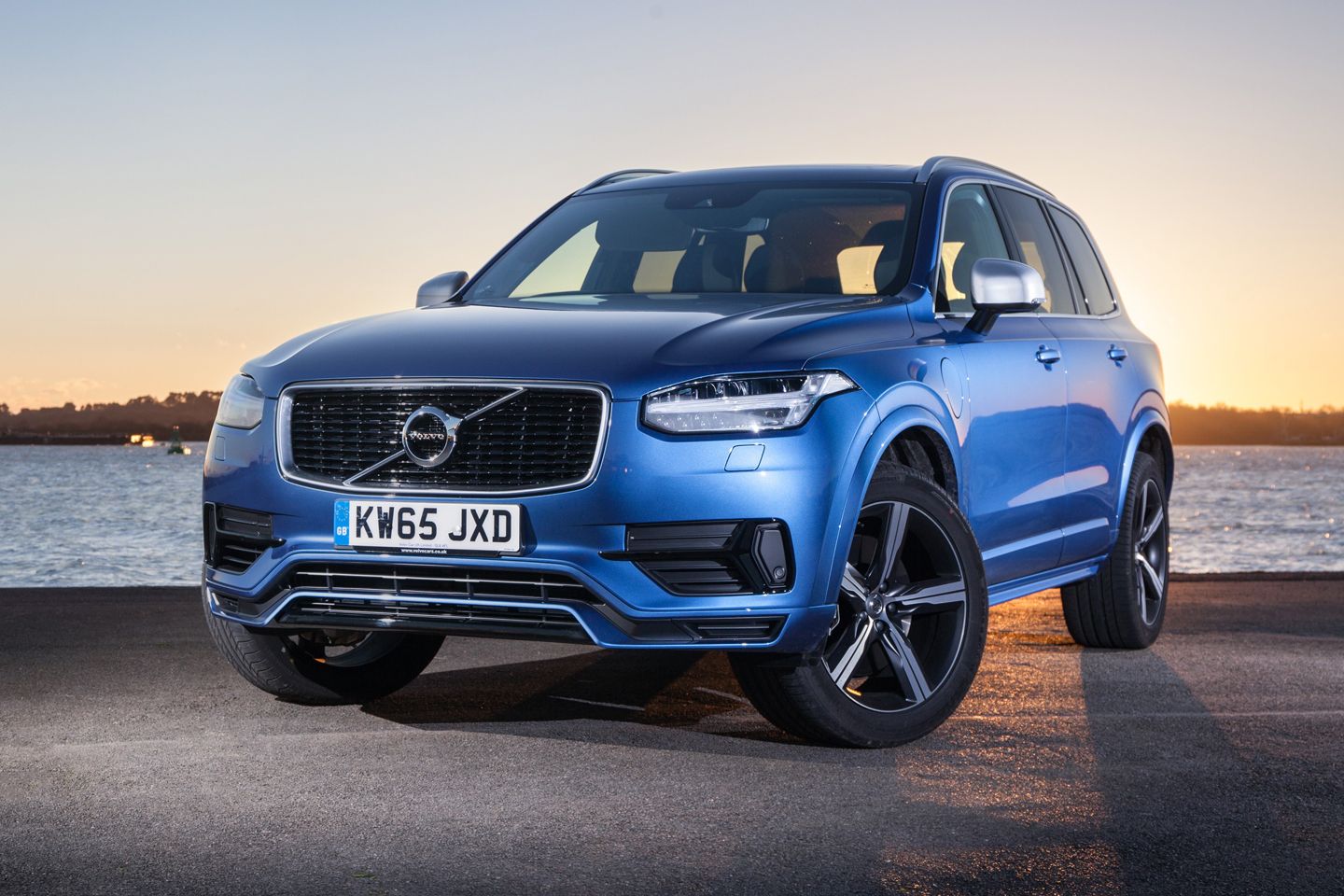
Key considerations
- Available for just over £25,000
- Twin-charged 2.0-litre inline four petrol with electric motor
- Gathers speed at quite a rate; don’t believe the three-figure mpg claims
- Beautiful and comfortable cabin with loads of space
- T8 has depreciated to attractive levels…
- … but gen-two XC90s have not been problem-free
The original XC90 made its public debut at the Detroit Show in 2002 after Volvo had teased it there the year before as an ‘adventure concept car’. In styling terms the XC90 was certainly an adventure for this traditionally conservative Swedish firm as it was quite different to anything they’d done before, with one key exception: it was big and chunky and looked entirely capable of driving through a brick wall.
This strong look – backed by a battery of tangible safety features including an industry-first roll stability control system – was massively important for long-term Volvo owners who had come to equate this brand with mega-safety. Volvo hoped that the new car would also entice a whole new market of baby boomers wanting versatile and comfortable transport for their kids that was not only safe but also, in another big departure for Volvo, a bit cool. Designed by Californian ex-NASA engineer Doug Frasher, the XC90 really hit the spot, selling strongly for the best part of 15 years with a variety of drivetrains including a Yamaha 4.4-litre V8.
In 2012 Volvo announced that the second generation XC would be going on sale in 2015. It should have appeared a good few years earlier than that on the 2006-on Ford EUCD platform that underpinned the S-Max, Mondeo and Galaxy as well as other Volvos and the Land Rover Freelander 2 (Ford being Volvo’s owner at the time). Unfortunately the XC90/EUCD project was canned by Ford two years before Chinese firm Geely acquired Volvo in 2010. Ultimately the gen-two XC90 would be on Volvo’s new Scaleable Product Architecture platform, making the new car bigger than the old one in every dimension as well as stiffer, lighter and more efficient.
In 2008 Volvo had said that, by 2020, nobody would be killed or seriously injured in a new Volvo. It was a bold and worthy claim which by the time of the gen-two XC90’s release in 2015 had been diluted to ‘a trend going towards zero deaths’. This sounded like a cop-out, but you still had to hand it to Volvo for their ambition and the new XC90 was hardly short of safety tech including automatic braking if you turned in front of an oncoming car, collision avoidance to help you miss not only cars but also cyclists, pedestrians and for all we know cats, plus ‘run-off-road’ protection and semi-autonomous driving in traffic. They must have been quite confident about it all because they gave the King of Sweden the number 1-badged First Edition car, complete with its peasant-suppressing 1,400-watt 19-speaker Bowers & Wilkins sound system.
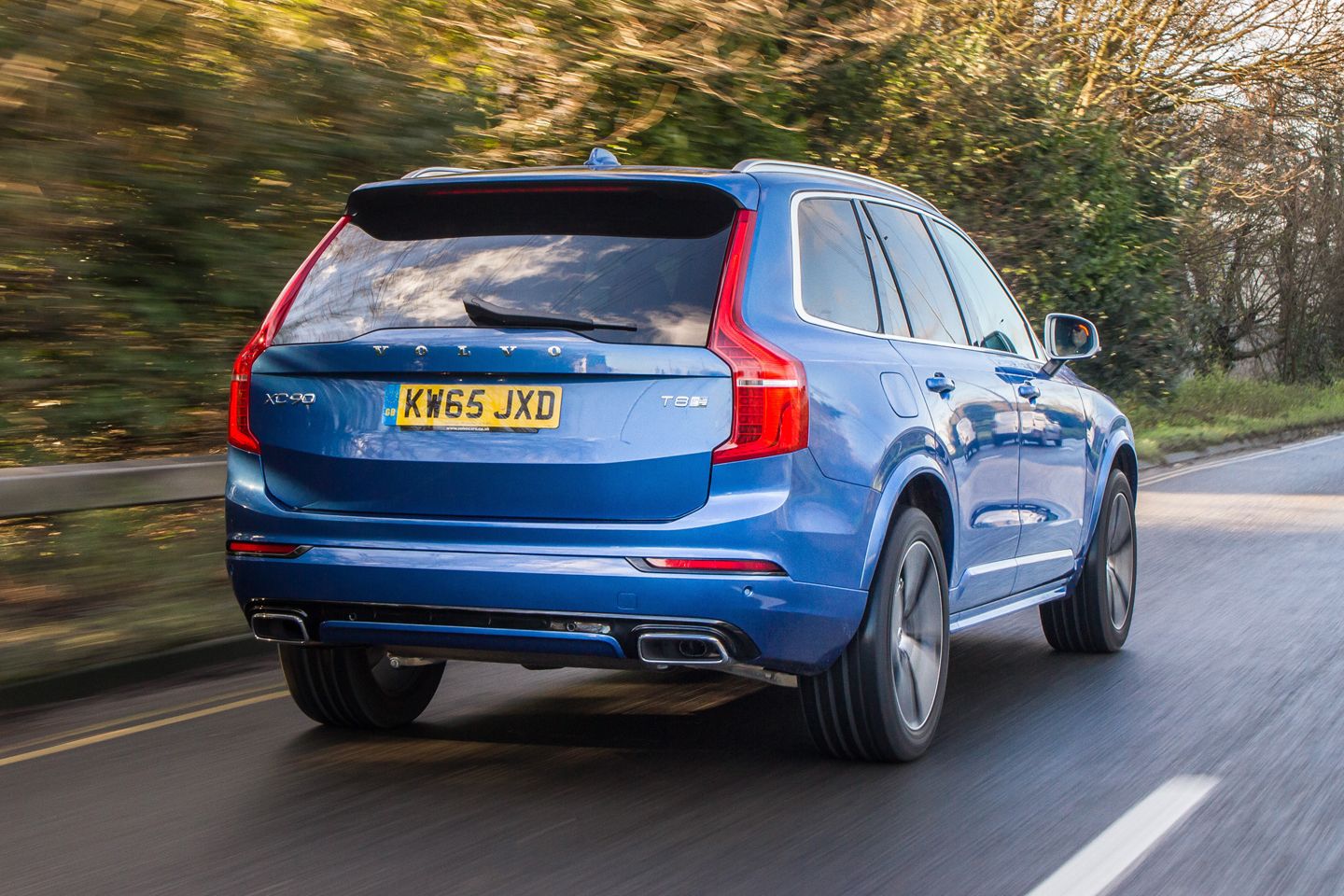
The core engines would be Drive-E 2.0-litre units running on diesel (D5) or petrol (T5, T6 and T8) mated to 8-speed Geartronic ‘manumatic’ transmissions, but that simple description only told part of the story. Volvo used various combinations of turbocharging, hybridisation and supercharging to achieve different levels of power and economy from that two-engine start point. They used all three in the headline model petrol-electric T8, which was turbocharged for high-rpm performance and supercharged for low-rpm performance, generating a ‘dirty’ total of 314hp, augmented by an 81hp/65kW electric motor fed by a 96-cell 9.2kWh capacity battery pack driving the rear wheels. This T8 ‘twin engine’ model is the one we’re focusing on here.
If you wanted to lord it away from the lights, the T8’s 0-62mph time of 5.6sec was of interest. If you were a business user, so was its 49g/km emissions figure, and its ability to do over 20 miles on electricity alone put it right in the wheelhouse of anyone doing short commutes. On top of all that, there was a lot to love in the calmingly Scandinavian high-spec interior, and the build quality was something anyone could admire on a daily basis.
None of the new XC90s were cheap. Even the basic model was around £46,000, with the T8 version starting off at about £55,500. Kitted-up First Edition models in Onyx Black with amber leather, walnut inlays and 21in Inscription wheels came in at nearly £69,000 even though the UK First Edition cars (of which there were 55) only had the twin-turbo 225hp D5 diesel engine. Whatever, none of that stopped the entire global run of 1,927 First Editions being snapped up in under two days after its announcement in September 2014, for delivery in April 2015.
There was a gen-two refresh in 2019 which brought more efficient energy recovery tech, a new concave grille, new paints and alloy wheel designs, and the migration of the Oncoming Lane Mitigation system from the XC90 to the XC60. The T8 received a bigger 11.8kWh battery pack. Its entry price went up to £66,645. Luckily for used buyers, the high prices for new gen-two XC90s opened the door for depreciation to have a pretty good go at them, more than halving the new prices of 2015 and even 2016 cars. Pre-facelift T8s now go for as little as £25k.
SPECIFICATION | VOLVO XC90 T8 (2015-on)
Engine: 1,969cc inline four petrol 16v turbocharged + supercharged + electric motor
Transmission: 8-speed automatic, all-wheel drive
Power (hp): 384@5,700rpm + 81hp (electric)
Torque (lb ft): 295@2,200-4,500rpm (petrol) + 177 (electric)
0-62mph (secs): 5.6
Top speed (mph): 140
Weight (kg): 2,340
MPG: depends on use, 20-30 miles from battery in electric-only mode
CO2 (g/km): 49
Wheels (in): 18-22
Tyres: 235-275/40-55
On sale: 2015 – now
Price new: from £55,450
Price now: from £25,000
Note for reference: car weight and power data is hard to pin down with absolute certainty. For consistency we use the same source for all our guides. We hope the data we use is right more often than it’s wrong. Our advice is to treat it as relative rather than definitive.
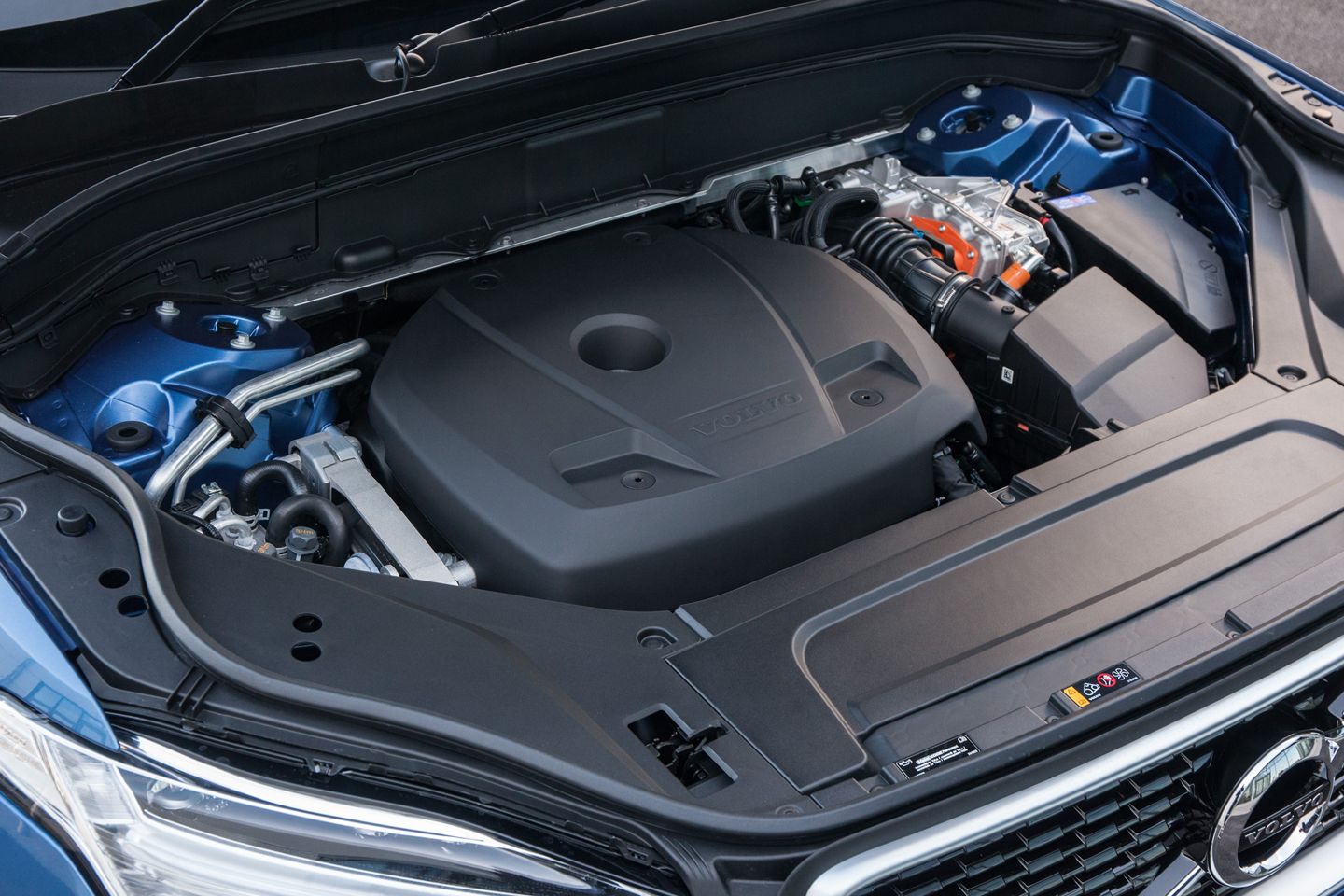
ENGINE & GEARBOX
With an engine, supercharger, turbocharger, electric motor and supplementary starter/generator to help blend in the mode transitions, the T8 was about as far removed from Fred Flintstone’s rock car as you could imagine. Getting all these elements to work smoothly with the transmission was always going to be something of a head-scratcher for Volvo’s engineers, and jerky press drives in pre-production cars suggested that there was more scrat
ching to be done.
Fortunately they got it all sorted in time for the sales to the public to the extent that you barely knew what was going on with the drivetrain, a compliment in a vehicle that was set up for comfortable cruising rather than bellowing noise and pops and bangs on the overrun.
The rear-axle mounted electric motor meant that the T8 had all-wheel drive without any need for a space-robbing propshaft. This allowed the motor’s batteries to be located in the central transmission tunnel which in turn (along with a slightly smaller fuel tank) allowed Volvo to retain the third row of seats that would often be sacrificed in hybrid SUVs. In Pure (eco drive) mode you could run the car for up to 24 miles on electricity alone, while at the other extreme in Power (sporty driving) mode the full gamut of electricity was added to the output of the ICE. Between those two, Hybrid (everyday use) mode let the car choose its own mix of ICE and battery power. You also had settings for Off Road (rough road) and AWD (all-wheel drive) for maximum traction.
Choosing ‘Braking’ on the touch screen gave extra regeneration on downhill sections. ‘Hold’ saved all your electricity for later, for example when you found yourself in an ICE-unfriendly zone, while ‘Charge’ was the lazy driver’s option (preferred by around 50 percent of PHEV owners) of letting the engine do all the battery charging. If you weren’t going to be disciplined about charging the battery via a plughole you were better off in a straight diesel XC90, financially at least, because if you drove a T8 normally without trying to maintain a light touch on the throttle to prevent the ‘proper’ engine from joining in you’d be in a car returning mpg figures in the mid to low 20s. If you were doing local driving mostly in EV mode with the ICE running maybe 50 percent of the time you could get up to the mid to high 30s. The official return of 134.5mpg was more jiggery-pokery than realism, but whichever mode you were in your motoring life became wonderfully serene in a T8.
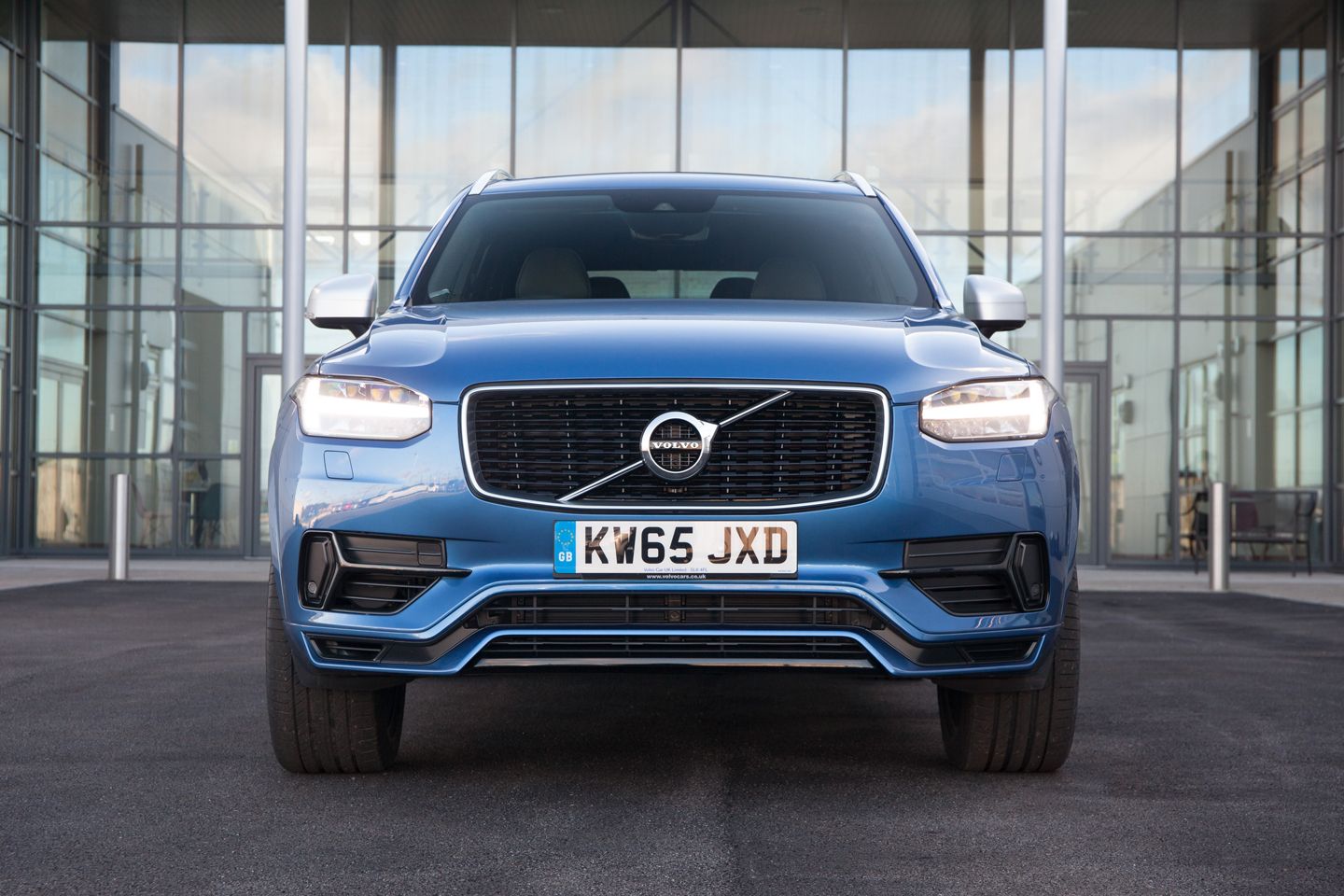
The XC90 was covered by a 3-year/60,000 mile warranty in the UK. The T8’s battery pack was covered by a separate 8-year/100,000 mile warranty. The main things you had to watch out for were hesitation or the petrol engine kicking in unexpectedly from a standing start along with an indication of zero battery charge, or 1-2 second power drops when accelerating in Hybrid mode, or juddering or clunking from the rear, as any or all of those symptoms could be pointing to a failing or failed electric motor, otherwise known in T8 circles as the ERAD (Electric Rear Axle Drive). If ERAD failure happened outside the warranty, which it annoyingly seemed to do quite a bit, replacing it would cost you something in the region of £9,000. Volvo UK opted to cover the full replacement cost for cars up to four years old, and half of the cost on cars up to five years old, which was something at least. Eventually a repair/modification kit came out which reduced the fixing cost to around £3,500 (£1,700 parts and 12 hours labour to fit), but the motor’s failure rankled with owners.
Onboard battery chargers have also been known to die quite early on in a T8’s life. For one Swedish owner it happened at 26 months, which would have been fine in the UK even on the standard 3yr warranty, but it wasn’t fine in Sweden apparently as they only got a 2 year warranty there. Check the charge door works OK and also make sure that no error messages come up after a few minutes of test charging.
T8s could also drop into ‘turtle’ mode in which you were told that the car was about to slow down and then stop. It would usually restart after a minute or two’s recovery time and an ECU reflash at the dealership would normally sort it out. Quite a few software updates have been carried out on XC90s over time to rectify glitches with transmissions and other vehicle systems.
With so many electrical systems on not just this but many other modern cars it’s important to keep the regular battery in peak condition. There was a recall for over 30,000 XC90s built between April 2015 and March 2016 to replace a fuel hose that could crack from the inside, potentially causing a leak. Dodgy coolant hoses were found on a small number or pre-May 2019 XC90s. Potential engine fires affecting cars with 2.0 diesel engines didn’t affect the petrol-powered T8 as far as we know. Small services at a Volvo dealership would be around £340, bigger ones around £530. Independent specialists were a lot cheaper, typically charging £50-£60 an hour for labour, which was about half of what the main dealers wanted.
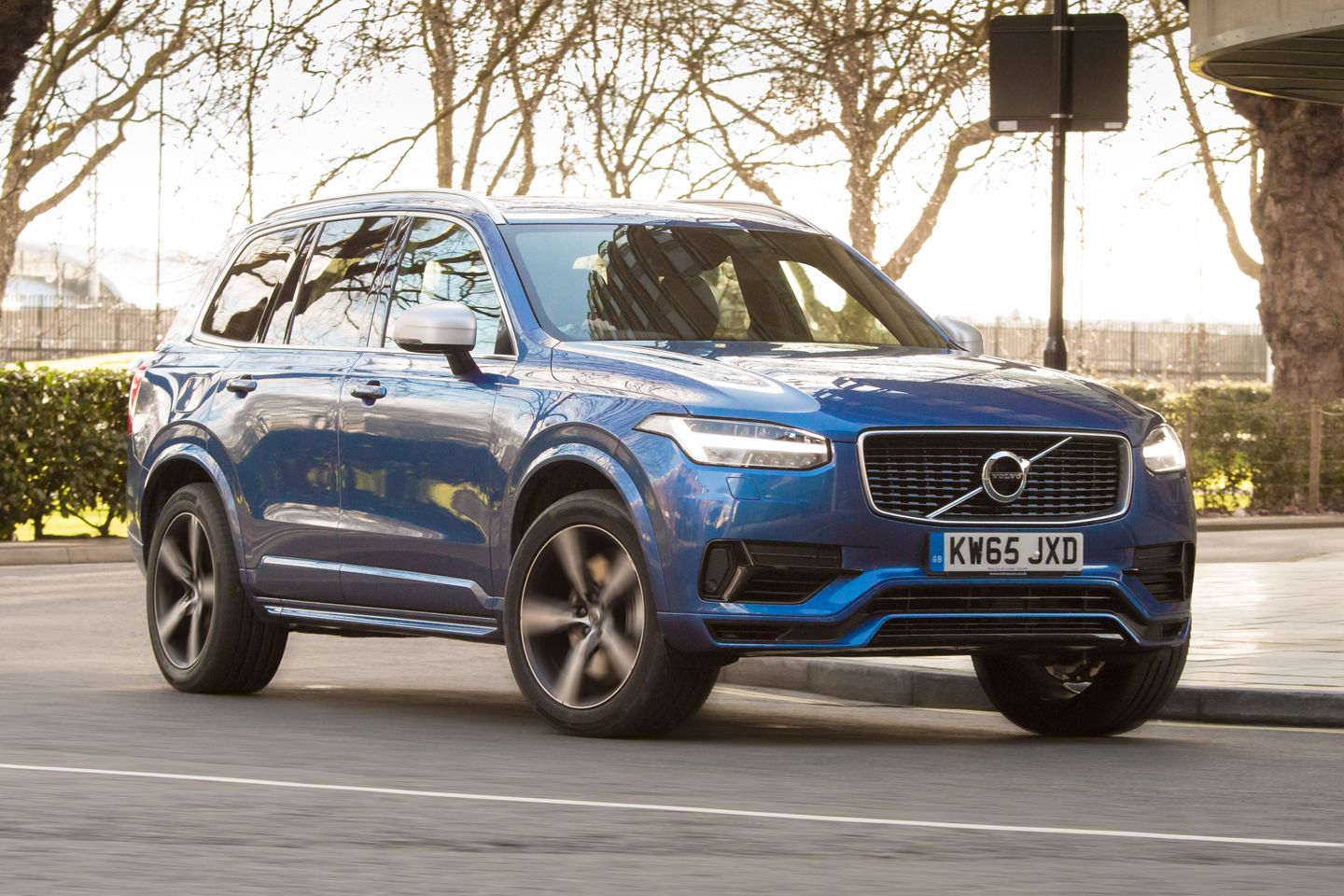
CHASSIS
Suspension was double-wishbone front with, unusually, transverse leaf springs at the back. Air suspension was standard on the top two specs (R-Design and Inscription) and it was an option worth considering on the Momentum even at a little over £2,100 as it gave you ride height adjustability and ironed out some of the wobbliness and shimmying that inevitably came with the hard springing necessary for such heavy (2.3 tonne) vehicles. It also helped to create the illusion that you were driving something smaller than a 5-metre long SUV.
Steering angle sensors could fail and that could trigger a host of other electrical issues. ABS systems could conk out, and some owners noticed odd vibrations at certain speeds which were sometimes bad enough to cause the seat or steering wheel to shake. Wheel balancing and alignment and/or tyre replacement could produce a solution.
There was a huge recall in March 2020 to address faults in the autonomous emergency braking systems of nearly three-quarters of a million Volvos which didn’t automatically stop like they were supposed to when they were faced with a test obstacle. It didn’t affect normal braking.
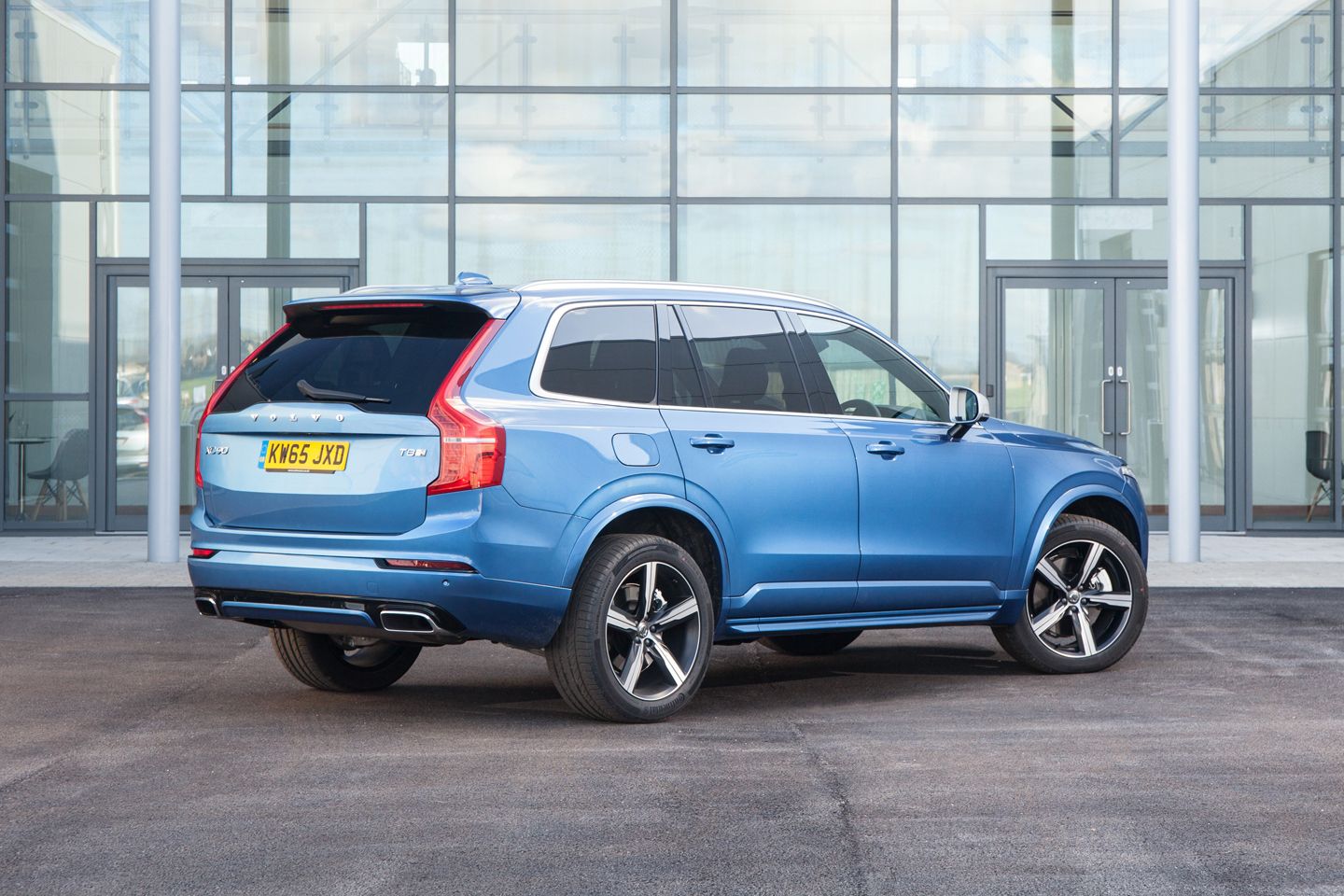
BODYWORK
Most of the gen-two’s metal body parts were fashioned from boron steel, the strongest steel available to the auto industry at the time. Trouble was, XC90s in general have always been popular school run cars and even boron steel can’t resist that sort of treatment. Expect to see scuffing to the wheels and bodywork ex
tremities.
The sunroofs on some cars have been known to give up, as have the opening sensors for the electronic tailgate. There have also been reports of inadequate windscreen or roof rail sealing and/or sunroof drainage problems which can lead to dampness or pooling of water in the footwells and boot. Misaligned doors have been noted as a possible cause. Water dripping from the bottom of an opened door is not a good sign. Recalls were issued by Volvo but you should check the dryness of carpeting under the mats on any car you’re thinking of buying.
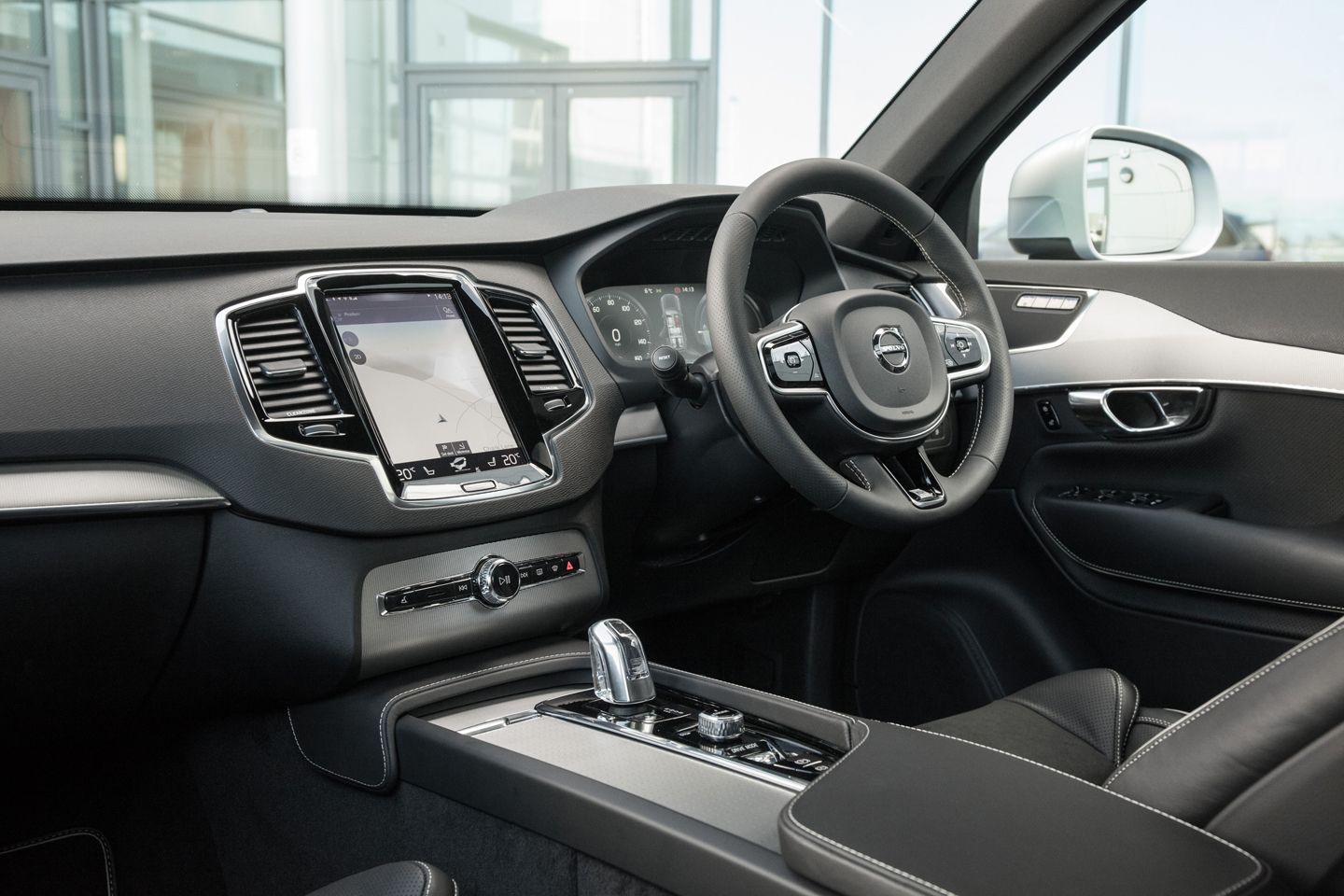
INTERIOR
In any trim level – Momentum, R-Design and the range-topping Inscription – the gen-two XC90 cabin was Scandi-cool and as quiet as a fjord thanks to strong NVH practices which included carpeting for all pockets and cubbies to kill rattles. The cabin design was refreshingly simplified by routing the majority of the controls to the sharp-definition central portrait format touchscreen. Flanked by big air vents, it was positioned higher than in certain earlier Volvos, where they were had been distractingly low and laden with a confusing hierarchy of command levels that sometimes made you wonder how they ever got it through type approval.
The new screen was still somewhat fiddly to operate but you could work it with gloves on, should you ever find yourself driving a 21st century car while wearing gloves. In fairness you might do that in colder climates than the UK’s. The Sensus infotainment wasn’t the world’s fastest but it was good to look at while you were waiting. The two main ‘clocks’ looked analogue but were actually part of an 8in screen. Some cars have had trouble with warping dashes and splitting wood trim. Some drivers have ventured the opinion that the illuminated ‘crystal’ gearknob was a bit council.
Seat comfort, either standard or R Design, was excellent, as was the driving position. Tall drivers will rarely find themselves wishing there was more length adjustment on the base. The outer seats in the middle row slid independently while third-row passengers were supplied with their own air vents and cupholders. Even with those third seats in use there was a decent 262 litres of boot room, 135 litres down on the non-hybrid XC90s because of the room-stealing rear motor Dropping the rearmost seats increased that to 640 litres, with a positively vanlike 1,800-plus litres available when both back rows are (nearly) flat, a capacity beaten by the Mercedes GLS but not much else.
As noted earlier the overall ambience was beautifully serene. Pro spec cars gained a Winter pack, consisting of heat to the front seats, steering wheel, headlamp wash nozzles and windscreen and (we think) an auxiliary fuel powered heater, though we might be wrong there.
Some owners have experienced issues with non-functioning airbags. Three recalls were carried out on cars built up to July 2015, cars built for a week between August and September 2016, and cars built between November 2016 and March 2017. There have also been problems with aircon, sticking rear seats, random check engine lights, and faulty brake switches.
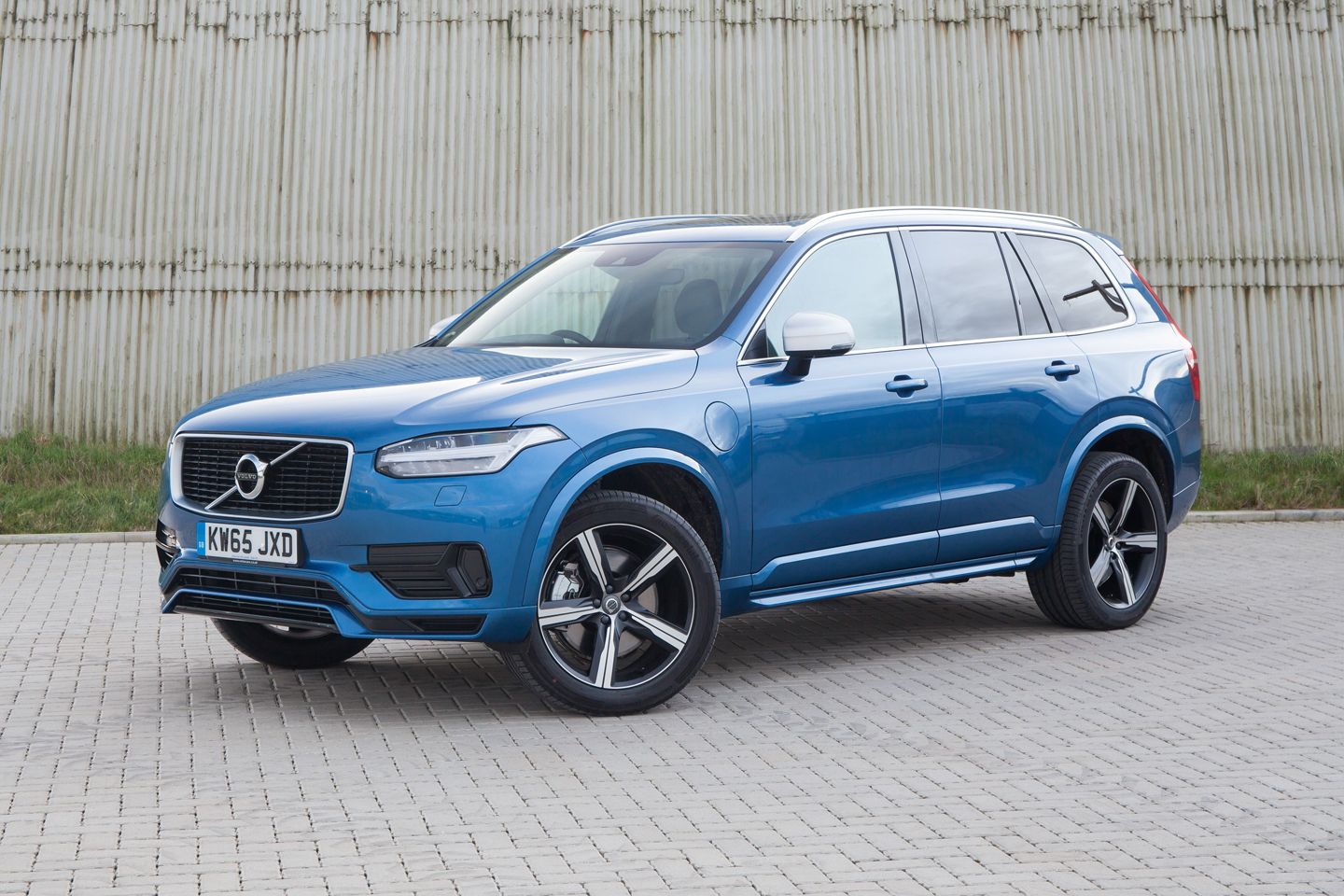
PH VERDICT
The XC90 T8 won’t appeal to those who like to shout about their car from the rooftops. It has an understated quality to it that might not command as much attention as luxury SUVs like Land Rover’s Discovery, Audi’s Q7 or Mercedes’s GLS but it will nevertheless give you a sense of quiet satisfaction whenever you’re letting it off the leash or enjoying the effortlessness of performance that has won it quite a few towcar of the year awards.
Today an R-Design T8 will cost you just over £70k without options. As noted earlier however you can now pick a used one up for not much more than £25k. Some will say ‘yeah well what do you expect, it’s only got a four-cylinder, something this big needs a six at least’. Or words to that effect. That’s a perception rather than a fact though. Once you’ve driven a T8 the number of cylinders it has will no longer trouble your brain space.
As you will have seen if you bothered to read all of this story there have been a few problems with XC90s in general. T8s have had their own model-specific issues too, most worryingly in connection with the lifespan of the rear electric motor and to a lesser extent of the onboard charging mechanism. You’d like to think that after a blizzard of recalls the worst is now over and that used T8s will be free of endemic issues. Make sure that all the recalls have been carried out, obviously.
A lot of the T8s you’ll see for sale in the UK will have higher average mileages than lesser-spec XC90s, reflecting their popularity among powerfully built directorial types who have places to go and other powerfully built people to see. These higher mileages don’t seem to hurt T8 values much, suggesting a general confidence in their ability to take the miles.
Here’s a good example of what we mean. The cheapest T8 on PH Classifieds at the time of writing was this 119,000-mile 2017 Inscription at £25,445. Obviously it’s not an exact comparison as different retailers charge different prices but chopping only 19,000 miles off that in this lower-spec Momentum will cost you an extra £3,500. This 2017 top-spec Inscription Pro with 80,000 miles is just under £36k. Something from the same year but in R-Design spec and only 70,000 miles will be the same sort of money, viz this one.
[ad_2]
Source link
